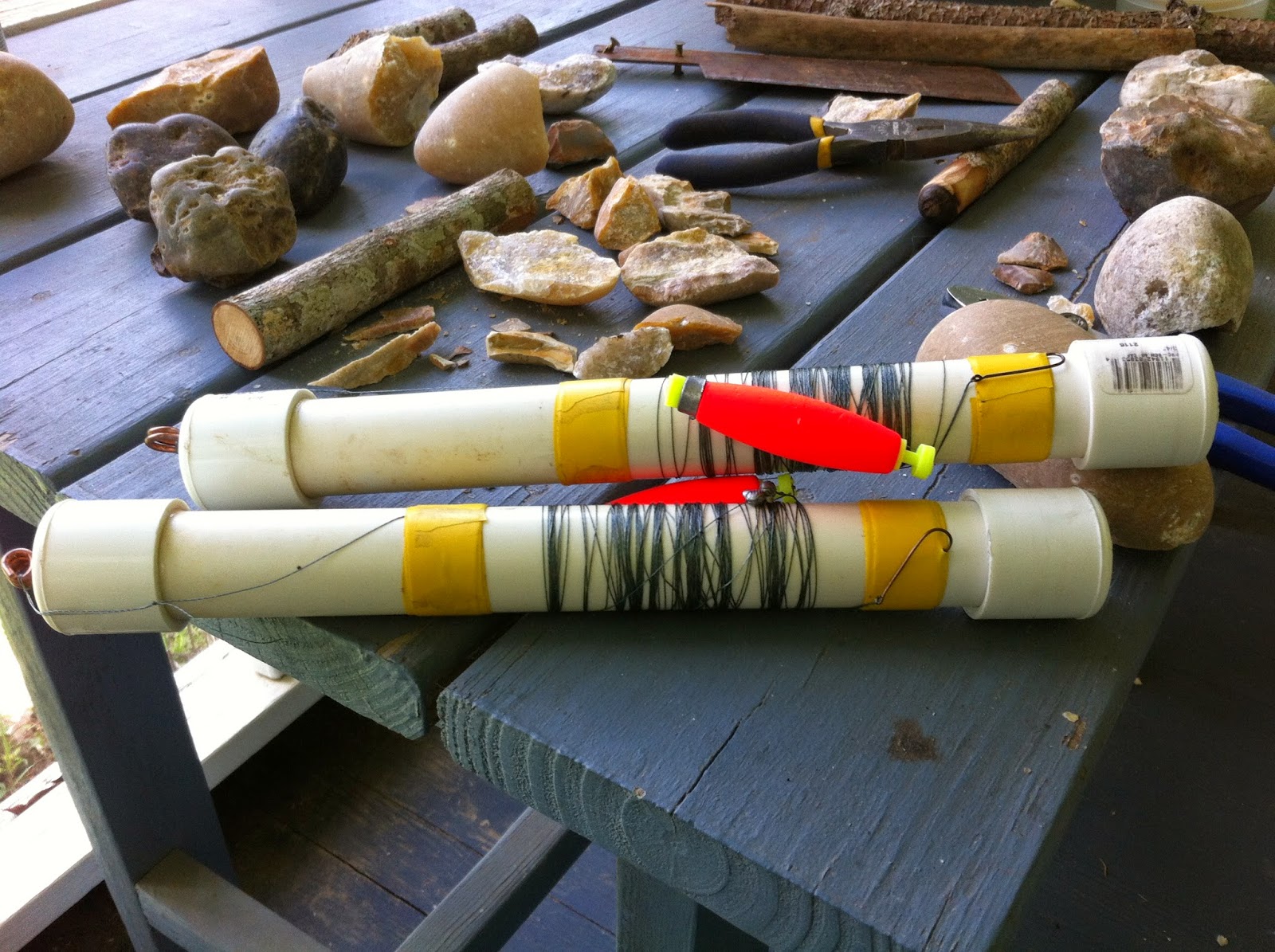I finally got around to doing it.
I have wanted to do it for quite
a long time, ever since I watched a Dave Canterbury video about it on YouTube
some years ago. I just never set myself to the simple task. Watching the videos
that Nate Hains posted kindled a fire under my fanny. Yep it was time to get
busy.
The rig is really a smart idea.
If there is water around there
are fish. Whether for the simple pleasure of catching and enjoying a meal of
them or desperately needing them for food in a survival situation, there are
fish to be had if you have a means to catch them.
Shirli and I both carry fishing
gear in our kits … line, a couple sizes of hooks, split shot, floats that we
call bobbers around these parts, a few pan fish (we call them brim) jigs, and small
artificial baits that look like earth worms. Who knows? Live natural bait might
be elusive and hard to find so carry something artificial just in case. Always be prepared.
 The thing that really sold me on the idea and prompted me
to put these together is the fact that you can cast them and get your baited
hook out farther than you can when using a short sapling as a pole. A pole that
is long enough to do some good is also hard to manipulate in dense cover.
Especially overhead cover.
The thing that really sold me on the idea and prompted me
to put these together is the fact that you can cast them and get your baited
hook out farther than you can when using a short sapling as a pole. A pole that
is long enough to do some good is also hard to manipulate in dense cover.
Especially overhead cover.
Of course I had to add a little
personal touch to these fishing pipes.
One was to affix a little
contraption to the butt end cap to attach the line to rather than tying it
around the pipe.
I drilled a small hole, put
several circular bends in a short piece of solid copper wire, inserted that
into the cap, and then did the same circular bending outside. It is secure
inside and out. On went the cap with some cement and it is a permanent fixture
on the fish catching device.
The other end is not glued on.
The pipe becomes its own small tackle box. I did do a little light sanding on
the pipe so the front cap is not as likely to get stuck on so tight that it is
difficult to get off. I also sanded the burrs and sharp edges on the cap that
might interfere with casting and retrieving the line. On went the cap.
Next was to measure off the line,
attach it to the copper wire, and wrap it onto the pipe. I used 30 feet of 20
pound test braided line. I figure that is plenty long enough for these waters. Once the line was on I applied several wraps of
electrical tape. One holds the tail end of the line in place on the pipe so it
cannot wander around and get loose. The other makes an ideal place to hang your
hook between episodes of fishing or when the fishing rig is riding on the truck
seat. You know … for those times when you might be driving by a spot and can
wet a line for the heck of it.
During transport in a pack the
attached bobber can be slid down close to the split shot and the whole catching
end stored securely inside the pipe.
I got to thinking about something
else this rig can be used for that increases the possibility of catching fish …
catfish in particular.
Measure off as many 30 foot
sections of #36 bank line as you care to fool with or figure you might need in
your given situation. Roll them securely and have them handy in your kit. They
can be attached one at a time to the fishing pipe, rigged with a good catfish
hook and baited, cast out, detached from the pipe and secured to a root or
tree, and left overnight to do their catching thing while you are tending to
other important stuff around camp. The bank line is out deep enough to do more
good than if the bait was laying in shallower water.
With a little overnight luck you
might be cleaning catfish for breakfast and have enough for leftovers at noon.


No comments:
Post a Comment